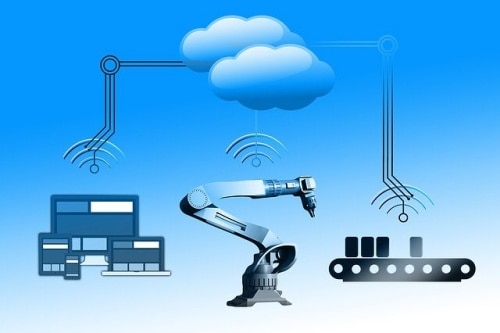Smart manufacturing is no longer just a buzzword. Its practices allow production companies to harness the power of data and enhance overall production efficiencies. At the heart of smart manufacturing are industrial internet of things (IIoT) technologies, which is one of the biggest enablers of Industry 4.0. The development of the internet of things (IoT) to support consumer-focused activities has expanded into the industrial sector, creating factory and warehouse operations. Exploiting the opportunities presented by IIoT, which is expected to generate economic value from US$1.2 to US$3.7 trillion by 2025, is crucial for manufacturers.
The potential of this technology is vast for manufacturers in Southeast Asia seeking to develop and scale their digital infrastructure. Manufacturers across the region are taking bold steps to digitise operations by integrating IT and operational technology systems. IIoT technologies connect sensors, equipment, controls, and industrial computing platforms to give warehouses and factories visibility and control of equipment and processes. The industry is also becoming smarter with the deployment of artificial intelligence to unearth the value of big data for analytics and insights that can open up new revenue streams and improve customer satisfaction.
Infrastructure limitations
Relying on the cloud to support real-time analytics and decision-making for all of these devices is not feasible. The sheer volume of data generated by sensors and these other devices can be overwhelming. With edge computing supporting IIoT, a durable and reliable IT infrastructure can maximise production and facility efficiency.
Before proceeding on this digitisation journey, factory, warehouse, and other production plant operators should consider all of the network assets that are enabling business-critical operations. IIoT devices need to be on the factory floor instead of data centres or centralised offices which, in turn, exposes it to harsh and potentially damaging conditions.
Condition-based monitoring (CBM) collects operating data from industrial equipment in real time and allows operators to assess the actual condition of components as well as the implementation of proactive service. This way, maintenance can be conducted as needed, rather than scheduled to minimise downtime.
Manufacturers should ensure that the network infrastructure includes the following characteristics to operate at optimal efficiency.
- Power Continuity and Quality - To avoid power disruptions or delays that can adversely affect system availability, it is essential for devices at the edge of networks to have a dedicated power backup through connections to uninterruptible power supply (UPS). For manufacturers operating in harsh conditions, it is advisable to use an industrial grade UPS that carries a high fault tolerant rating and other rugged features.
- Air Quality - It is no secret that the air quality in industrial settings leaves a lot to be desired. The high concentrations of airborne dust and particles can compromise the reliability and life expectancy of IT equipment if it ends up in server fans. Means of protection can include dust-protected or sealed IT racks, and enclosures that keep unfiltered air away from the equipment. It is equally important to integrate a dedicated cooling system to create a clean, temperature-controlled environment.
- Physical Security - When computing and storage hardware are located nearby like in a manufacturing environment, the possibility of a human breach is never far away. The risk of unauthorised access will increase the vulnerability of the edge computing architecture. Securing the devices in lockable cabinets and putting sensors on doors are highly-recommended best practices.
- Network Edge Infrastructure Visibility - With manufacturing facilities and factories located in rough environments where dedicated technical resources and support might not be available, remote monitoring capabilities are crucial to give IT specialists the visibility to assess equipment performance promptly.
However, there are challenges to be considered, such as deployment times and over-stretched IT resources, that can be obstacles to establishing a standardised infrastructure across multiple facilities. A more effective approach would be to leverage integrated, micro data centre solutions that are designed to provide superior performance and reliability in tough conditions.
IIoT adoption can enable enterprises to increase the value of IT assets and resources, but maintaining these devices at the edge of networks also illustrates the problems that can arise without proper equipment protection. Enterprises that deploy integrated micro data centres with remote monitoring capabilities can reduce latency and disruptions to operations. The speed at which manufacturing works today means increasing operational efficiency and minimising risks of downtime must be high on the agenda to successfully future-proof production processes.



